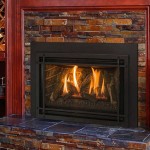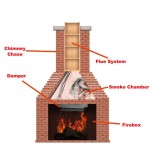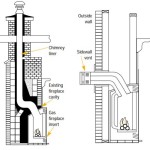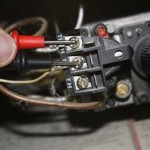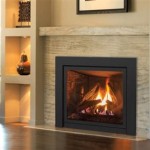Trim Around Fireplace Stone: Function, Aesthetics, and Installation
Fireplace stone installations, whether encompassing the entire wall or acting as an accent around a firebox, offer a visually striking focal point within a room. However, the transition between the stone and adjacent wall surfaces can often appear unfinished or abrupt. This is where trim plays a crucial role. Trim provides a visual bridge, concealing any uneven edges or gaps and offering a defined border that enhances the overall aesthetic appeal of the fireplace. Furthermore, trim serves a practical purpose by protecting the edges of the stone and adjacent wall surfaces from damage and wear. The selection process involves considering various materials, styles, and installation techniques to achieve the desired finish and functional benefits.
The decision to incorporate trim around a fireplace stone surround is often driven by a combination of aesthetic preferences and practical considerations. While some homeowners may favor a minimalist approach, opting for a seamless transition, others recognize the value of trim in adding a layer of refinement and protection to the fireplace area. The choice ultimately depends on the existing architectural style of the home, the type of stone used, and the desired visual impact.
Understanding the Functions of Fireplace Stone Trim
Trim around fireplace stone serves several important functions that contribute to both the aesthetics and longevity of the installation. Understanding these functions is essential for making informed decisions about the type of trim to use and the installation methods to employ.
Firstly, trim acts as a visual concealer. Irregularities or minor imperfections are often present in the edges of stone veneer or natural stone installations. These inconsistencies, while often subtle, can detract from the overall polished appearance of the fireplace. Trim effectively conceals these flaws, providing a clean and uniform border that enhances the visual appeal of the entire fireplace surround. It creates a defined separation between the stone and the adjacent wall, resulting in a more professional and finished look.
Secondly, trim offers physical protection. The edges of stone, particularly manufactured stone veneer, can be susceptible to chipping or damage from accidental impacts. Similarly, the adjacent drywall or plaster walls are vulnerable to scratches and scuffs from furniture or foot traffic. Installing trim provides a protective barrier, shielding the edges of the stone and the surrounding wall surfaces from potential damage. This is particularly important in high-traffic areas or homes with children or pets.
Thirdly, trim can contribute to insulation and energy efficiency. While the primary insulation of a fireplace comes from the firebox and chimney design, trim can assist in sealing small gaps between the stone and the wall. This reduces drafts and prevents heat loss, contributing to improved energy efficiency and a more comfortable indoor environment. This is especially relevant for fireplaces used regularly during colder months.
Finally, trim can contribute significantly to the overall design aesthetic. It provides an opportunity to introduce a contrasting color, texture, or material that complements the stone and the surrounding decor. This can enhance the visual interest of the fireplace and create a more cohesive and stylish living space. The style of the trim can be chosen to match the architectural style of the home, whether it be modern, traditional, or rustic.
Material Options for Fireplace Stone Trim
The selection of the appropriate trim material is crucial for achieving the desired aesthetic and functional performance. Several material options are available, each offering unique characteristics in terms of appearance, durability, and cost.
Wood is a classic and versatile choice for fireplace stone trim. It offers a warm and inviting aesthetic, and it can be easily painted or stained to match the existing decor. Wood trim is available in a wide range of profiles, from simple and contemporary to ornate and traditional. Common wood species used for trim include pine, oak, maple, and poplar. It is important to select wood that is properly dried and treated to prevent warping or cracking. Wood trim is generally suitable for fireplaces that are used moderately and are not exposed to excessive heat or moisture. Because wood is combustible, ensure proper clearances from the firebox opening as required by local building codes. Consider fire-retardant coatings for added safety.
MDF (Medium-Density Fiberboard) is an engineered wood product that offers a smooth and uniform surface, making it ideal for painting. MDF is also less expensive than solid wood, making it a budget-friendly option. However, MDF is more susceptible to moisture damage, so it is not recommended for fireplaces that are exposed to high humidity or are located in damp environments. Like wood, MDF is combustible and requires proper clearance from the firebox.
Polyurethane trim is a synthetic material that offers excellent durability and resistance to moisture, making it a good choice for fireplaces in bathrooms or other areas where humidity is a concern. Polyurethane trim is also lightweight and easy to install, and it can be painted or stained to match the desired color. It is also less prone to warping, cracking, or insect damage compared to wood. Furthermore, polyurethane trim is generally less flammable than wood, although it can still melt or deform under high heat.
Stone trim, often crafted from the same material as the fireplace surround, offers a cohesive and visually striking option. This choice provides a seamless transition between the stone and the surrounding wall, creating a unified and elegant appearance. Stone trim can be custom-fabricated to match the specific dimensions and profile of the fireplace. However, stone trim can be more expensive and more challenging to install than other materials. It also adds significant weight to the installation.
Metal trim, such as steel or aluminum, offers a sleek and modern aesthetic. Metal trim is durable, fire-resistant, and easy to clean. It is available in a variety of finishes, including brushed nickel, stainless steel, and powder-coated colors. Metal trim can be used to create a contemporary or industrial look. It is also a good option for fireplaces that are exposed to high heat. However, metal trim can be more expensive than other materials, and it may require specialized tools and skills for installation.
Installation Techniques and Considerations
Proper installation of trim around fireplace stone is crucial for achieving a successful and aesthetically pleasing result. The specific installation techniques will vary depending on the type of trim material used and the construction of the fireplace surround.
Prior to installation, meticulous planning is essential. This includes accurately measuring the dimensions of the fireplace surround and the surrounding wall surfaces. It also involves selecting the appropriate trim profile and ensuring that it complements the style of the fireplace and the surrounding decor. Proper preparation of the surfaces is also crucial. The stone and wall surfaces should be clean, dry, and free of any loose debris. Any imperfections or gaps between the stone and the wall should be filled with a suitable patching compound or caulk.
When working with wood or MDF trim, precise cuts are essential for achieving a professional-looking finish. A miter saw is recommended for making accurate miter cuts at the corners. The trim should be securely attached to the wall using construction adhesive and finishing nails. The nail holes should be filled with wood filler, sanded smooth, and then painted or stained to match the trim.
Polyurethane trim can be installed using similar techniques as wood trim. However, it is important to use a construction adhesive that is specifically designed for polyurethane. Polyurethane trim can also be cut with a miter saw, although it is recommended to use a fine-tooth blade to prevent chipping. Lightweight nature of the material makes it easy to handle.
Stone trim requires a more specialized installation process. The stone trim should be adhered to the wall using a thin-set mortar that is specifically designed for stone veneer. It is important to ensure that the stone trim is properly aligned and leveled during installation. Grouting may be required to fill the joints between the stone trim and the stone surround. This requires careful attention to detail and specialized tools.
Metal trim can be installed using screws, nails, or adhesive, depending on the type of metal and the construction of the fireplace surround. It is important to use corrosion-resistant fasteners to prevent rusting. Metal trim may require specialized tools for cutting and shaping.
Finally, regardless of the trim material used, caulking is essential for sealing any gaps between the trim and the stone or wall surfaces. This will help to prevent drafts and moisture damage, and it will also create a more finished and professional look. Use a high-quality, paintable caulk that is specifically designed for interior use. Apply the caulk evenly and smoothly, and wipe away any excess with a damp cloth.

I Want To Remove The White Trim Around Our Fireplace Put Up Faux Stone Mantle And Sit Back An Winter Living Room Mantel Built Ins

Fireplace Trim Kit

34 Beautiful Stone Fireplace Ideas That Rock Bring The Rusticity Home Stacked Fireplaces

T Out A Fireplace With Barn Wood Newlywoodwards

Result For Stone Fireplace With Crown Molding Home Built Ins Design

Fireplace Trims K2 Stone

M Rock Manufactured Concrete Fireplace Trim Kit Gray Mrfireplacegray The Home Depot

Heartland Remodeling Llc Quality Tile Trim For St Charles County And Beyond

I Can T Stand My Ugly Stone Fireplace What Do Laurel Home

M Rock Manufactured Concrete Fireplace Trim Kit Brown Mrfireplaceb The Home Depot
Related Posts

